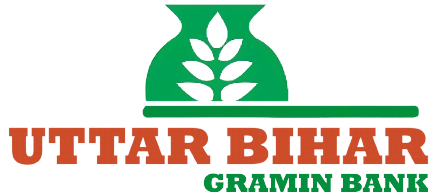Bihar Gramin Bank’s New Pratibha Education Loan is designed to help students from rural and semi-urban families fund higher education. This note explains who can apply, what the loan covers, how repayment works, and the documents you’ll need. I focus on practical details so you can decide whether to approach the bank and what to expect during the application.
Who qualifies
Eligibility is usually straightforward. Applicants must be Indian nationals. Priority is given to students and families within the bank’s service area in Bihar. You need either an admission offer or a confirmed seat in a recognized course. The bank will also assess the applicant’s family income and creditworthiness of the co-applicant (usually a parent or guardian).
Why that matters: The bank wants to ensure the loan will be repaid. Proof of admission shows you will use the money for study. A co-applicant with steady income improves approval chances.
Courses & institutions covered
The loan generally covers a wide range of courses. Examples include:
- Undergraduate degrees: B.Tech, B.Sc, B.Com, BA
- Postgraduate degrees: M.Tech, MBA, MSc, MA
- Professional courses: MBBS, BDS, Pharmacy, Law, Architecture
- Diploma and vocational programs that lead to employable skills
- Research programs such as PhD, if linked to a recognized university
Why: Banks fund courses that lead to credible career outcomes. They check whether the institution is recognized by the relevant statutory body (AICTE, UGC, MCI, etc.).
India / abroad scope
Many RRB education loans fund study in India and overseas. If you plan to study abroad, you will typically need:
- Admission letter from a foreign university
- Cost breakup in foreign currency
- Passport and visa details
- Proof of ability to meet foreign currency expenses (bank may check exchange rules)
Why: Overseas loans involve foreign exchange, higher fees, and different risk. Banks want clarity on credentials and fee structure before releasing funds.
Eligible expenses
Education loans usually cover more than tuition. Typical items financed include:
- Tuition and admission fees. The core component.
- Hostel and living expenses. Rent, food, utilities—useful for students away from home.
- Books, equipment and lab fees. Essential for technical and medical courses.
- Travel and one-time relocation costs. For foreign study this includes airfare and visa fees.
- Insurance, if required. Some banks insist on loan insurance for borrower protection.
Why it helps: Including living costs avoids forcing students to take separate personal loans or use savings during the course.
Collateral / guarantor basics
Whether collateral is needed depends on the loan size and bank policy. Common patterns are:
- Smaller loans: May be offered without tangible security if within the bank’s collateral-free limit.
- Larger loans: Often need security. Acceptable securities can include residential property, fixed deposits, or government bonds.
- Guarantor or co-applicant: A parent or guardian acts as co-applicant. In some cases, a third-party guarantee is acceptable.
Why: Security reduces the bank’s risk and can lower your interest rate. If you cannot provide collateral, be prepared for stricter scrutiny of income and academic credentials.
Moratorium & repayment
Moratorium is the period during which you don’t have to make principal repayments. Typical structure:
- Moratorium = course duration + 6 to 12 months (or 6 months after getting a job), depending on bank policy.
- Interest may still accrue during moratorium on some loans; on others interest is payable monthly.
- After moratorium, repayment usually switches to Equated Monthly Instalments (EMIs) over a pre-agreed tenor, commonly 5–15 years depending on loan size.
Why: A moratorium gives breathing space to establish a career before starting heavy payments. But if interest accrues during that time, the total repayment cost rises. Always compare whether interest is simple (paid monthly) or capitalised (added to principal).
Interest rates
Interest rates vary by bank policy, loan amount, security, and borrower profile. Expect these features:
- Rates are usually variable, linked to the bank’s base rate or MCLR.
- Secured loans often carry lower rates than unsecured ones.
- Special concessions may apply for meritorious or economically disadvantaged students under government schemes.
Example to illustrate: Two students borrow the same amount. One provides property as security; the bank offers a lower rate because the risk is smaller. The other borrows without collateral and receives a slightly higher rate. Always ask the bank for an annual percentage rate and a full amortization schedule to compare total costs.
Documentation checklist
Prepare complete documents to speed approval. Commonly required papers:
- Proof of identity: Aadhaar, PAN, passport or voter ID.
- Proof of address: utility bill, ration card, or Aadhaar address.
- Admission proof: offer letter or fee demand from the institution.
- Course and fee breakup: official document from the college/university.
- Academic records: mark sheets, certificates of previous education.
- Co-applicant documents: identity, address, income proof (salary slips or ITR), bank statements.
- Collateral documents, if applicable: property papers, fixed deposit receipts, valuation report.
- For abroad students: passport copy, visa (when available) and foreign fee schedule.
- Passport-size photographs and signed loan application form.
Why each item: Identity and address verify the borrower. Academic and admission documents prove purpose. Income and collateral support repayment assurance.
FAQs
Q: Can I get a top-up loan later?
A: Often yes, if you need funds for further study or emergent costs. The bank will reassess your profile and the purpose before sanctioning a top-up.
Q: Is there a tax benefit?
A: Interest paid on education loans is usually eligible for tax deduction under the Income Tax Act (Section 80E) for up to eight years. Keep loan statements and interest certificates for tax filing.
Q: What if I don’t get a job after course completion?
A: Contact the bank promptly. Banks may offer restructuring, extended moratorium, or revised EMIs depending on your situation and proof of job search.
Q: How long does sanction take?
A: Processing time varies. With complete documents, local branches often approve within 1–3 weeks. Collateral valuation or complex foreign documentation can extend timelines.
Q: Can part of the loan go directly to the college?
A: Yes. Banks often pay tuition directly to the institution. This reduces misuse and ensures fees are settled on time.
Before you apply, visit your nearest Bihar Gramin Bank branch, ask for the New Pratibha Education Loan product sheet, and request an indicative repayment schedule. That gives you exact numbers for your case and prevents surprises later.

Kritti Kumari is a banker and MBA graduate who writes about banking, finance, and customer-friendly services. She simplifies complex financial products into easy guides, helping readers understand Bihar Gramin Bank’s offerings and make smarter money decisions.

